Themed collection Breaking bonds over many timescales: in celebration of Robin Perutz’s 70th birthday

Breaking bonds over many timescales: in celebration of Robin Perutz's 70th birthday
We are delighted to present this collection of articles to celebrate Professor Robin Perutz’s 70th birthday.

Dalton Trans., 2020,49, 254-255
https://doi.org/10.1039/C9DT90277E
Bonding rearrangements in organometallic reactions: from orbitals to curly arrows
The movement of the center of charge of localized orbitals along a reaction pathway draws the curly arrows describing the bonding rearrangement.
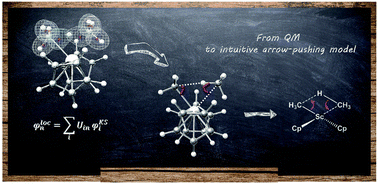
Dalton Trans., 2019,48, 15740-15752
https://doi.org/10.1039/C9DT03063H
The dilemma between acid and base catalysis in the synthesis of benzimidazole from o-phenylenediamine and carbon dioxide
Synthesis of azoles from ortho-substituted anilines and CO2 is limited by the cyclization reaction and not by CO2 reduction.
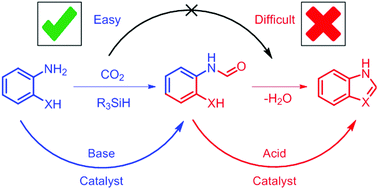
Chem. Commun., 2019,55, 13089-13092
https://doi.org/10.1039/C9CC06156H
CO2 activation by manganese pincer complexes through different modes of metal–ligand cooperation
Activation of CO2 by manganese pincer complexes using two different modes of metal–ligand cooperativity (amido/amino mode and dearomatization/aromatization mode) is reported.

Dalton Trans., 2019,48, 14580-14584
https://doi.org/10.1039/C9DT03088C
Palladium-mediated intramolecular dearomatization of ligated dialkylterphenyl phosphines
Thermal dearomative rearrangement of coordinated dialkylterphenyl phosphines mediated by Pd(II).
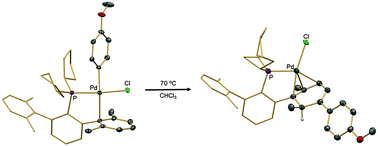
Dalton Trans., 2019,48, 14575-14579
https://doi.org/10.1039/C9DT03201K
The experimental determination of Th(IV)/Th(III) redox potentials in organometallic thorium complexes
ThIV/ThIII reduction wave in the cyclic voltammogram of [Th(η-C5H3{SiMe3}2)3Cl].
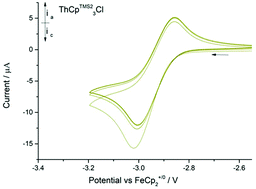
Dalton Trans., 2019,48, 10782-10784
https://doi.org/10.1039/C9DT01553A
Sterically hindered Re- and Mn-CO2 reduction catalysts for solar energy conversion
M(NN)(CO)3X (M = Re, Mn) complexes with a bulky diimine ligand catalyse electrochemical reduction of CO2 with high TON. A noble-metal free system of the Mn-complex photosensitised by a Zn-porphyrin photocatalytically reduces CO2 under visible light.
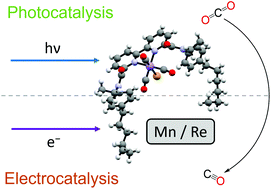
Dalton Trans., 2020,49, 4230-4243
https://doi.org/10.1039/D0DT00252F
Insights from semi-oriented EPR spectroscopy studies into the interaction of lytic polysaccharide monooxygenases with cellulose
Semi-orientated EPR spectroscopy reveals that lytic polysaccharide monooxygenases interact with their natural cellulose substrate in a specific way, where the copper active site is positioned adjacent to the edge of a crystalline cellulose fibril.
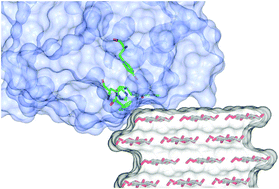
Dalton Trans., 2020,49, 3413-3422
https://doi.org/10.1039/C9DT04065J
Organometallic chemistry in aqua regia: metal and ligand based oxidations of (NHC)AuCl complexes
The synthesis and characterization of a series of N-heterocyclic Au(III) carbene complexes prepared by oxidation of (NHC)AuCl in aqua regia is described.
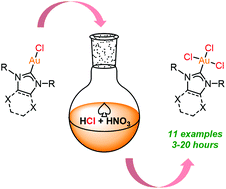
Dalton Trans., 2020,49, 3473-3479
https://doi.org/10.1039/C9DT04472H
Dicerium letterbox-shaped tetraphenolates: f-block complexes designed for two-electron chemistry
Well-defined dinuclear lanthanide complexes: stabilisation of both CeIII and CeIV.

Dalton Trans., 2020,49, 877-884
https://doi.org/10.1039/C9DT03291F
Reversible photo-isomerization of cis-[Pd(L-κS,O)2] (HL = N,N-diethyl-N′-1-naphthoylthiourea) to trans-[Pd(L-κS,O)2] and the unprecedented formation of trans-[Pd(L-κS,N)2] in solution
Ex-situ with polychromatic or in-situ laser light irradiation of solutions of pure cis-[Pd(L-κS,O)2] leads to the formation of trans-[Pd(L-κS,O)2] species that in the dark reverts via an unprecedented trans-[Pd(L-κS,N)2] cleanly to the cis-[Pd(L-κS,O)2].
![Graphical abstract: Reversible photo-isomerization of cis-[Pd(L-κS,O)2] (HL = N,N-diethyl-N′-1-naphthoylthiourea) to trans-[Pd(L-κS,O)2] and the unprecedented formation of trans-[Pd(L-κS,N)2] in solution](/en/Image/Get?imageInfo.ImageType=GA&imageInfo.ImageIdentifier.ManuscriptID=C9DT03672E&imageInfo.ImageIdentifier.Year=2019)
Dalton Trans., 2019,48, 17241-17251
https://doi.org/10.1039/C9DT03672E
A general benzylic C–H activation and C–C coupling reaction of zirconocenes mediated by C–N bond cleavage in tert-butylisocyanide – unusual formation of iminoacyl complexes
Reactions of the zirconocene alkyne complex [rac-(ebthi)Zr(η2-Me3SiC2SiMe3)] (rac-(ebthi) = rac-1,2-ethylene-1,1′-bis(η5-tetrahydroindenyl)) with tert-butylisocyanide and methylbenzenes were investigated.

Dalton Trans., 2019,48, 16525-16533
https://doi.org/10.1039/C9DT03120K
Phosphine-free ruthenium NCN-ligand complexes and their use in catalytic CO2 hydrogenation
A ruthenium hydride with a fluxional NHC ligand catalyses the hydrogenation of carbon dioxide.

Dalton Trans., 2019,48, 16569-16577
https://doi.org/10.1039/C9DT03143J
Insight into the mechanism of CO-release from trypto-CORM using ultra-fast spectroscopy and computational chemistry
Photolysis of trypto-CORM results in ultra-fast CO-dissociation and formation of a 16-e triplet followed by solvation.

Dalton Trans., 2019,48, 16426-16436
https://doi.org/10.1039/C9DT03343B
C–H and C–F bond activation reactions of pentafluorostyrene at rhodium complexes
Reactions of various Rh(I) complexes towards penta-fluorostyrene or its borylated derivative afforded coordination and C–F bond or C–H bond activation reactions.
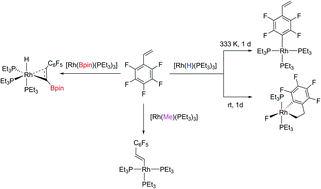
Dalton Trans., 2019,48, 16258-16267
https://doi.org/10.1039/C9DT03371H
A biotin-conjugated photo-activated CO-releasing molecule (biotinCORM): efficient CO-release from an avidin–biotinCORM protein adduct
A biotinylated carbon monoxide-releasing molecule (BiotinCORM) releases CO by photoirradiation at 400 nm; an avidin–biotinCORM adduct is an effective CO-releasing molecule.
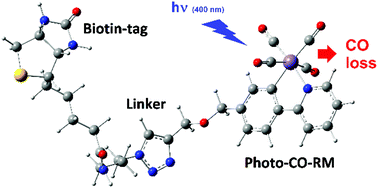
Dalton Trans., 2019,48, 16233-16241
https://doi.org/10.1039/C9DT03429C
The diverse mechanisms for the oxidative addition of C–Br bonds to Pd(PR3) and Pd(PR3)2 complexes
The reaction between bromobenzene and palladium(0) complexes leading to a palladium(II) complex containing bromide and phenyl ligands is studied computationally with DFT methods.

Dalton Trans., 2019,48, 16242-16248
https://doi.org/10.1039/C9DT03155C
Structural isomerism in the [(Ni@Sn9)In(Ni@Sn9)]5− Zintl ion
A new Zintl cluster, [(Ni@Sn9)In(Ni@Sn9)]5−, has been isolated in two distinct isomeric forms, one where both Ni@Sn9 units are coordinated to the bridging indium atom in an η3- mode, the other where one is η3- and the other η4-.
![Graphical abstract: Structural isomerism in the [(Ni@Sn9)In(Ni@Sn9)]5− Zintl ion](/en/Image/Get?imageInfo.ImageType=GA&imageInfo.ImageIdentifier.ManuscriptID=C9DT03008E&imageInfo.ImageIdentifier.Year=2019)
Dalton Trans., 2019,48, 15888-15895
https://doi.org/10.1039/C9DT03008E
Bi- and tridentate stannylphosphines and their coordination to low-valent platinum
Preferential cleavage of Sn–C sp3versus Sn–C sp2 bonds and establishment of trans influence trend SnMe3 > SnPh2(CH2R) > SnPh3 in platinum stannylphosphines.
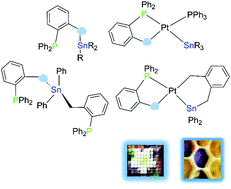
Dalton Trans., 2019,48, 15896-15905
https://doi.org/10.1039/C9DT03317C
Tuning the reaction pathways of phenanthroline-Schiff bases: routes to novel phenanthroline ligands
An unusual synthesis of a novel class of tetracyclic diimine ligand and its complexation to rhenium(I) is reported.
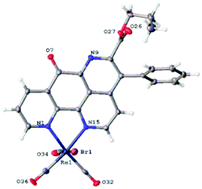
Dalton Trans., 2019,48, 15283-15289
https://doi.org/10.1039/C9DT03084K
Mechanistic insight into novel sulfoxide containing SABRE polarisation transfer catalysts
Mechanistic investigation of sulfoxide based catalysts used to transfer magnetisation from para-hydrogen to pyruvate and oxalate in SABRE.

Dalton Trans., 2019,48, 15198-15206
https://doi.org/10.1039/C9DT02951F
The role of neutral Rh(PONOP)H, free NMe2H, boronium and ammonium salts in the dehydrocoupling of dimethylamine-borane using the cationic pincer [Rh(PONOP)(η2-H2)]+ catalyst
Cationic σ-dihydrogen, σ-amine-borane and neutral hydride complexes, based upon {Rh(PONOP)}, are all shown play a role in the dehydrocoupling of H3B·NMe2H. Movement between the three is promoted by free amine, NMe2H.
![Graphical abstract: The role of neutral Rh(PONOP)H, free NMe2H, boronium and ammonium salts in the dehydrocoupling of dimethylamine-borane using the cationic pincer [Rh(PONOP)(η2-H2)]+ catalyst](/en/Image/Get?imageInfo.ImageType=GA&imageInfo.ImageIdentifier.ManuscriptID=C9DT03358K&imageInfo.ImageIdentifier.Year=2019)
Dalton Trans., 2019,48, 14724-14736
https://doi.org/10.1039/C9DT03358K
Photochemical or electrochemical bond breaking – exploring the chemistry of (μ2-alkyne)Co2(CO)6 complexes using time-resolved infrared spectroscopy, spectro-electrochemical and density functional methods
The photoassisted Pauson–Khand reaction involves the formation of a high-spin diradical species and not CO loss as previously thought.
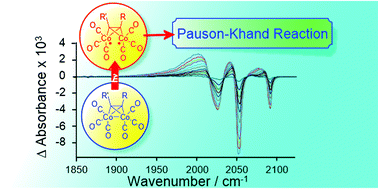
Dalton Trans., 2019,48, 14642-14652
https://doi.org/10.1039/C9DT03006A
Iridium complexes featuring a tridentate SiPSi ligand: from dimeric to monomeric 14, 16 or 18-electron species
Dimer [Ir{P(o-C6H4CH2SiMe2)2Ph}(μ-Cl)]2 featuring tricoordinate phosphinodisilyl ligands dissociates in solution to the reactive 14 electron monomer [Ir(SiPSi)Cl].
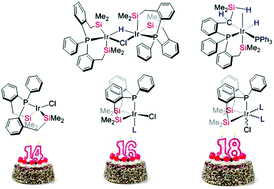
Dalton Trans., 2019,48, 14010-14018
https://doi.org/10.1039/C9DT03136G
Transforming PPh3 into bidentate phosphine ligands at Ru–Zn heterobimetallic complexes
P–C/C–H bond activation and P–C/C–C bond formation is observed upon adding ZnMe2 to [Ru(PPh3)3Cl2].
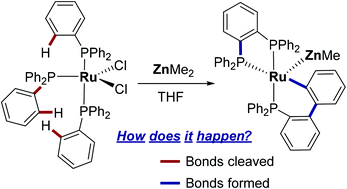
Dalton Trans., 2019,48, 14000-14009
https://doi.org/10.1039/C9DT03106E
Controlling the selectivity and efficiency of the hydrogen borrowing reaction by switching between rhodium and iridium catalysts
Fundamental insights into rhodium and iridium catalysed hydrogen borrowing reactions have enabled strategies for controlling product selectivity.
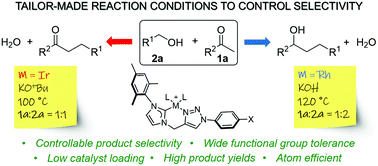
Dalton Trans., 2019,48, 13989-13999
https://doi.org/10.1039/C9DT02819F
Photolysis of Tp′Rh(CNneopentyl)(PhNCNneopentyl) in the presence of ketones and esters: kinetic and thermodynamic selectivity for activation of different aliphatic C–H bonds
The competitive activation of the various C–H bonds found in ketones and esters by a trispyrazolylborate rhodium complex are compared.
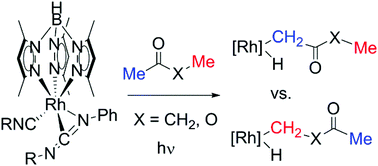
Dalton Trans., 2019,48, 10945-10952
https://doi.org/10.1039/C9DT01802F
About this collection
This special collection of Dalton Transactions is to mark the 70th birthday of mentor, friend and colleague, Professor Robin Perutz FRS. The collection features areas of organometallic and coordination chemistry where Robin has contributed over the last 40+ years. Themed around the breaking of bonds, it includes both thermal and photochemical bond breakage and activation in stoichiometric and catalytic reactions. Spectroscopic characterisation of reaction intermediates features alongside experimental and computational studies of reactivity.